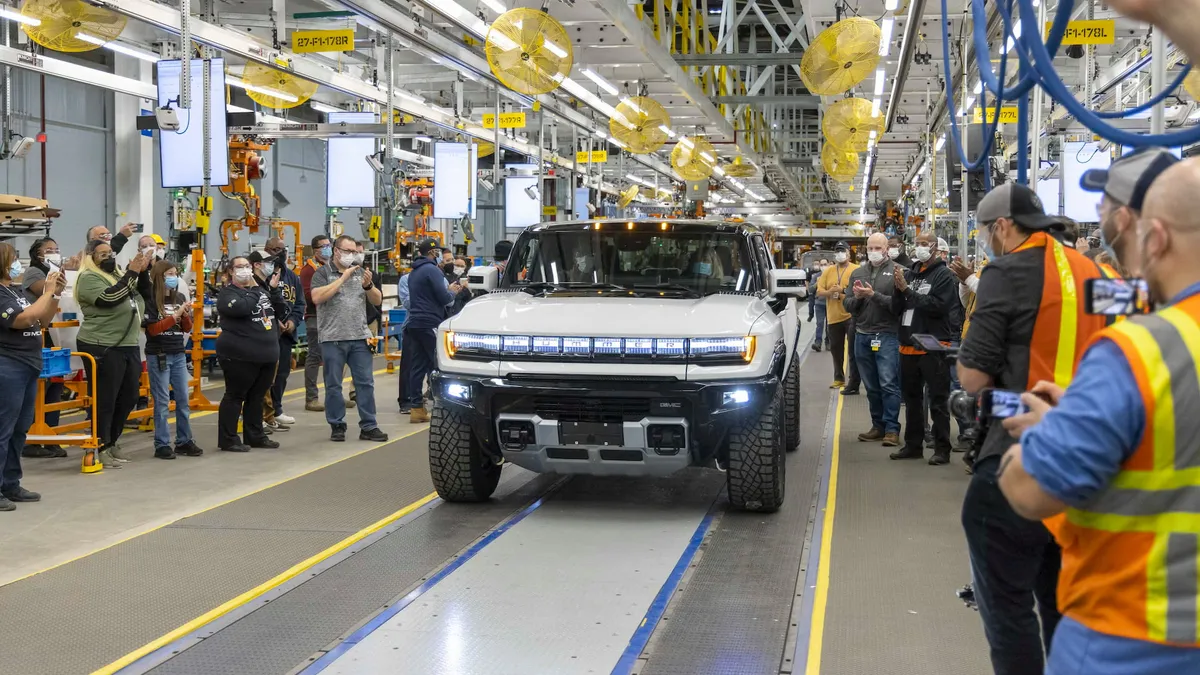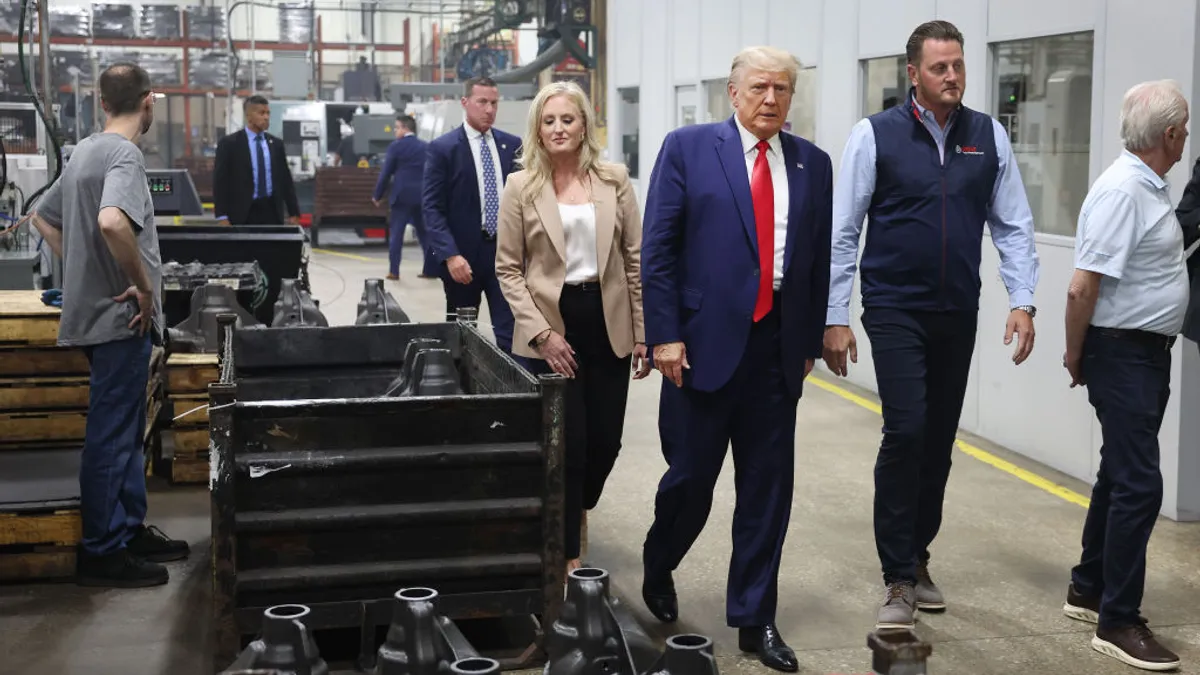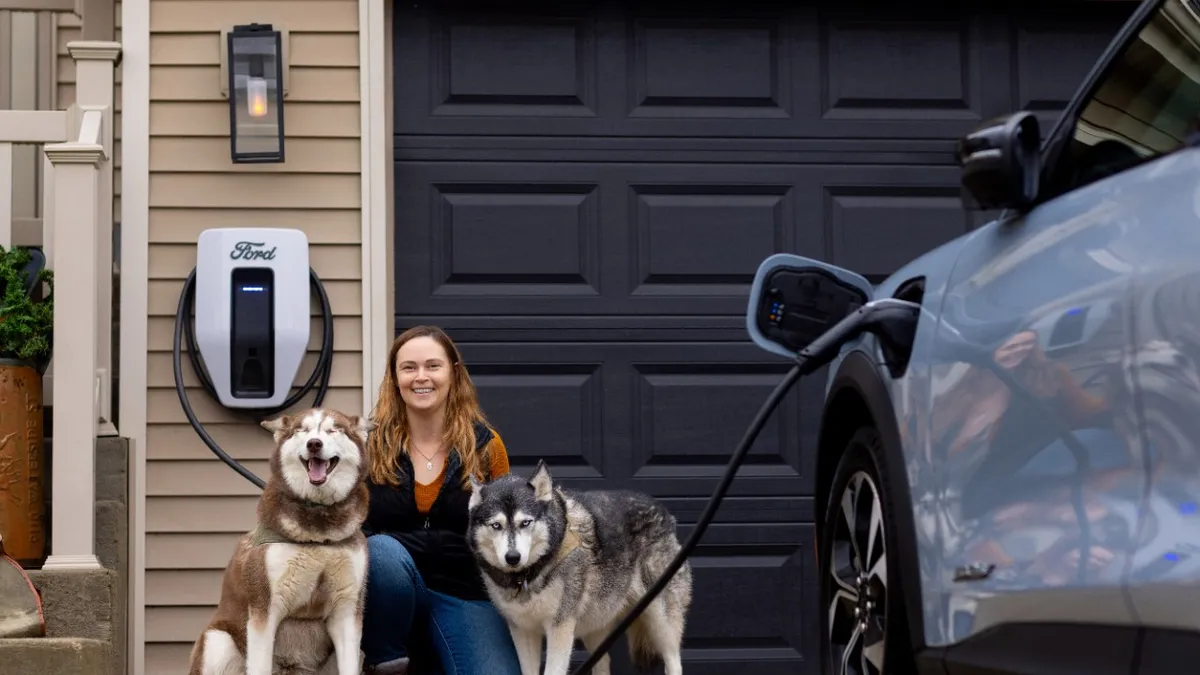The labor market in the U.S. clean energy sector is booming.
The sector added nearly 300,000 jobs between 2021 and 2022, growing to include more than 8.1 million workers, according to a Department of Energy report from June 2023.
Even as the manufacturing industry as a whole is projected to lose more than 113,000 jobs between 2022 and 2032, positions in clean energy-related sectors are expected to increase, according to October 2023 U.S. Bureau of Labor Statistics data. Solar electric power generation-related jobs, for example, are expected to grow by more than 60%, and wind turbine service technician jobs are projected to grow by 45%.
Last year, many manufacturers were struggling to fill entry-level roles, especially when trying to compete with big companies like Amazon and FedEx. However, that’s no longer the top challenge some manufacturers are talking about.
One of the major challenges among companies now is finding qualified labor for technical roles dealing with AI and automation when it comes to producing semiconductors, electric vehicles and batteries.
These manufacturers are struggling to find enough automation engineers, machinists, welders and even installation workers, said Justin Greach, global director of marketing at Ohio-based metalworks company Master Fluid Solutions. Greach highlighted solar panel installation specialists as one job function that's experiencing unprecedented demand as more companies and individuals make the switch to solar energy.
“A lot of people are going from your natural gas-powered home backup generators to solar power,” Greach said. “The whole value chain of solar has experienced a labor shortage."
Clean energy jobs projected to grow through 2032
Part of the manufacturing labor shortage also has to do with what Randy Wolken, president and CEO of The Manufacturers Association of Central New York, calls the “silver tsunami,” as experienced workers retire and not as many young workers replace them.
Wolken said this is due to a perception gap in which younger students don't have an accurate understanding of modern manufacturing.
"Many of these manufacturing facilities, people don't get a chance to go inside and see them and how they operate, how automated they are," Wolken said. "You drive by these nondescript buildings, and they don't really understand the technology being used and the fact that most of these jobs are really technicians or data-driven."
New York has attracted a huge amount of investment in semiconductor manufacturing over the past few years. Micron Technology, for example, announced in October 2022 that it will invest up to $100 billion over the next 20-plus years to construct the largest semiconductor fabrication plant in the U.S.
Wolken hopes that investments like this will attract younger people looking for more data-driven jobs like electrical and mechanical engineers.
More training is needed to recruit manufacturing workers
To attract and train more young people for emerging technical roles in manufacturing, Wolken said schools need to take more initiative to teach AI and automation. He cited apprenticeships as a great way to start.
“These allow individuals to go through a scheduled approach for learning along with mentoring and on-the-job training," Wolken said. "The country actually has been focused on apprenticeships. We think that's going to be one of the most significant changes in the way in which companies both hire and upskill."
The federal government is taking note of the benefits of apprenticeships as well. The Biden administration's fiscal year 2024 budget proposal included $335 million for the registered apprenticeship program to build educational pathways in industries such as construction, clean energy and semiconductor manufacturing.
Partnering with high schools and colleges is also a tactic some manufacturing organizations use, such as the Association of Equipment Manufacturers. The organization aims to train both students and teachers.
“Part of the challenge for schools right now is you're not getting teachers rolling out of college that are really comfortable teaching really hands-on tech ed. It’s just not a training that they've had,” Julie Davis, VP of people strategy at Association of Equipment Manufacturers, said.
To combat this, AEM collaborates with the Curriculum for Agricultural Science Education to teach an ag-science, STEM-based curriculum to those without a manufacturing background, like science and history teachers.
"Part of the challenge for schools right now is you're not getting teachers rolling out of college that are really comfortable teaching really hands-on tech ed. It’s just not a training that they've had."

Julie Davis
VP of People Strategy, Association of Equipment Manufacturers
Greach also said younger generations appreciate having more of a higher purpose in their jobs.
“I feel like they want higher level, more engaging work. They want to leverage technology, where a lot of the older generation had the skill set to do things manually," Greach said. "But the new gen, Gen Z, kind of came up with technology, so they want to leverage it.”
Randy Carr, president and CEO of custom-made textile company World Emblem, discussed how his medium-sized company invests in employee education as a retention tool.
“I think a lot of it is because we over communicate with our staff. We spend a lot of time communicating about the vision, the values and principles of the business are, and we spend quite a bit of money educating,” he said.
Looking at the months ahead, manufacturers are not only focusing on what skills need to be taught more, but where the labor pool is and the types of roles for which people need additional training. New developments in the industry have opened up job options for more people, including a growing number of careers in the country that don't require a bachelor's degree.
“A lot of what we talk about with manufacturers is this shift from, maybe you trained and developed your workers and maybe you didn’t,” Davis said. “But looking forward, we're all going to be needing to be ready to reskill, new-skill and upskill our workers because of the changes in technology that are happening.”





















